From the Trenches
Cursing the Competition
By ERIC A. POWELL
Monday, June 13, 2016
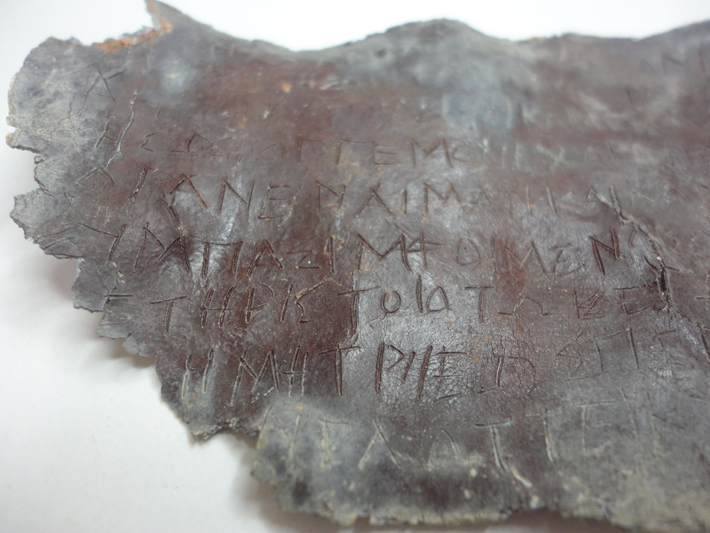
Off with Their Heads
By ANDREW CURRY
Monday, June 13, 2016
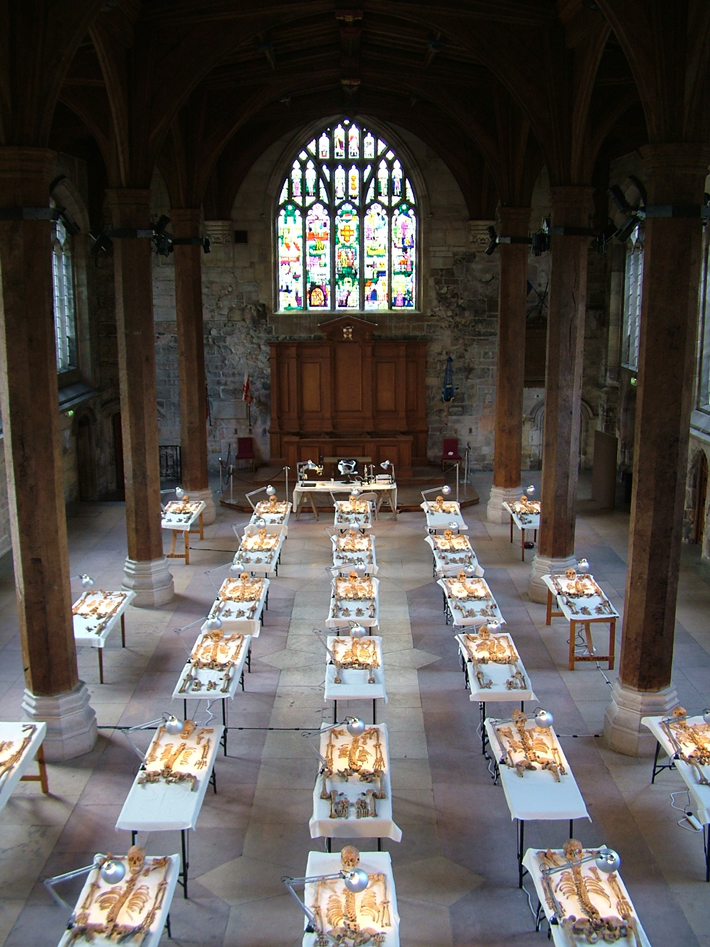 DNA testing on the skeletons of men buried in a graveyard in York—once one of the largest settlements in Roman Britain—suggests that even the far-flung fringes of the Roman Empire were diverse places. While most of the skeletons had genetic signatures resembling people living in modern-day Wales, one of the men came from thousands of miles away. His genes match those of modern-day Syrians, and chemical analysis of his teeth shows he grew up in a desert climate. “It’s confirmation of the idea that there was a lot of migration inside the Roman Empire,” says Dan Bradley, a geneticist at Trinity College Dublin who led the work.
DNA testing on the skeletons of men buried in a graveyard in York—once one of the largest settlements in Roman Britain—suggests that even the far-flung fringes of the Roman Empire were diverse places. While most of the skeletons had genetic signatures resembling people living in modern-day Wales, one of the men came from thousands of miles away. His genes match those of modern-day Syrians, and chemical analysis of his teeth shows he grew up in a desert climate. “It’s confirmation of the idea that there was a lot of migration inside the Roman Empire,” says Dan Bradley, a geneticist at Trinity College Dublin who led the work.
But what happened to their heads? All the men in the cemetery had been decapitated, and many were buried with their detached skulls nearby. Bradley suggests they may have been Roman soldiers or gladiators, but University of St. Andrews archaeologist Jon Coulston calls the idea that they had been gladiators “wishful thinking.” Beheading wasn’t common for gladiators—or criminals, for that matter. Coulston says, “I see no clear connection between decapitation and gladiatorial displays.” The mystery remains.
Etruscan Code Uncracked
By ROSSELLA LORENZI
Monday, June 13, 2016
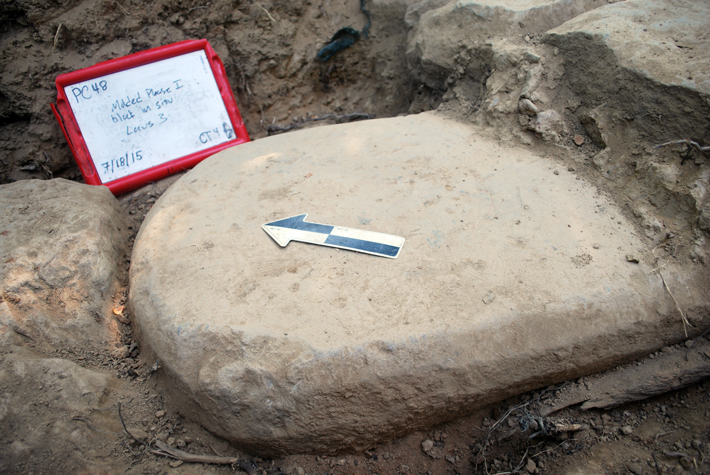 An inscribed stone slab unearthed at an Etruscan site in Tuscany is proving to contain one of the most difficult texts to decipher. It was believed that the sixth-century B.C. stela would shed light on the still-mysterious Etruscan language, but so far it remains a puzzle. “To be honest, I’m not yet sure what type of text was incised on the stela,” says Rex Wallace, professor of classics at the University of Massachusetts. Inscribed with vertical dots and at least 70 legible letters, the four-foot-tall and two-foot-wide slab had been buried for more than 2,500 years in the foundations of a monumental temple at Poggio Colla, some 22 miles northeast of Florence in the Mugello Valley. Archaeologists speculate that the text, written right to left, may refer to a goddess who was worshiped at the site, but so far no name of any god or goddess has been found. “The inscription is divided into words by means of three vertically aligned dots, so it’s possible to identify some of the word forms in the text,” Wallace says. “Unfortunately, most of the words that have been identified, apart from the numeral ki, ‘three,’ appear to be new additions to the Etruscan lexicon and we can’t yet pinpoint the meanings,” he adds.
An inscribed stone slab unearthed at an Etruscan site in Tuscany is proving to contain one of the most difficult texts to decipher. It was believed that the sixth-century B.C. stela would shed light on the still-mysterious Etruscan language, but so far it remains a puzzle. “To be honest, I’m not yet sure what type of text was incised on the stela,” says Rex Wallace, professor of classics at the University of Massachusetts. Inscribed with vertical dots and at least 70 legible letters, the four-foot-tall and two-foot-wide slab had been buried for more than 2,500 years in the foundations of a monumental temple at Poggio Colla, some 22 miles northeast of Florence in the Mugello Valley. Archaeologists speculate that the text, written right to left, may refer to a goddess who was worshiped at the site, but so far no name of any god or goddess has been found. “The inscription is divided into words by means of three vertically aligned dots, so it’s possible to identify some of the word forms in the text,” Wallace says. “Unfortunately, most of the words that have been identified, apart from the numeral ki, ‘three,’ appear to be new additions to the Etruscan lexicon and we can’t yet pinpoint the meanings,” he adds.
One of antiquity’s great enigmas, the Etruscans began to flourish around 900 B.C., and dominated much of Italy for five centuries. By around 300 to 100 B.C., they were absorbed into the Roman Empire. Their non-Indo-European language eventually died out, and much of what we know comes from short funerary inscriptions. “Now we are adding another example to the inventory of texts that aren’t short and formulaic,” Wallace explains. “However, this means it will be very difficult to interpret, for that very reason.”
Naval Mystery Solved
By SAMIR S. PATEL
Monday, June 13, 2016
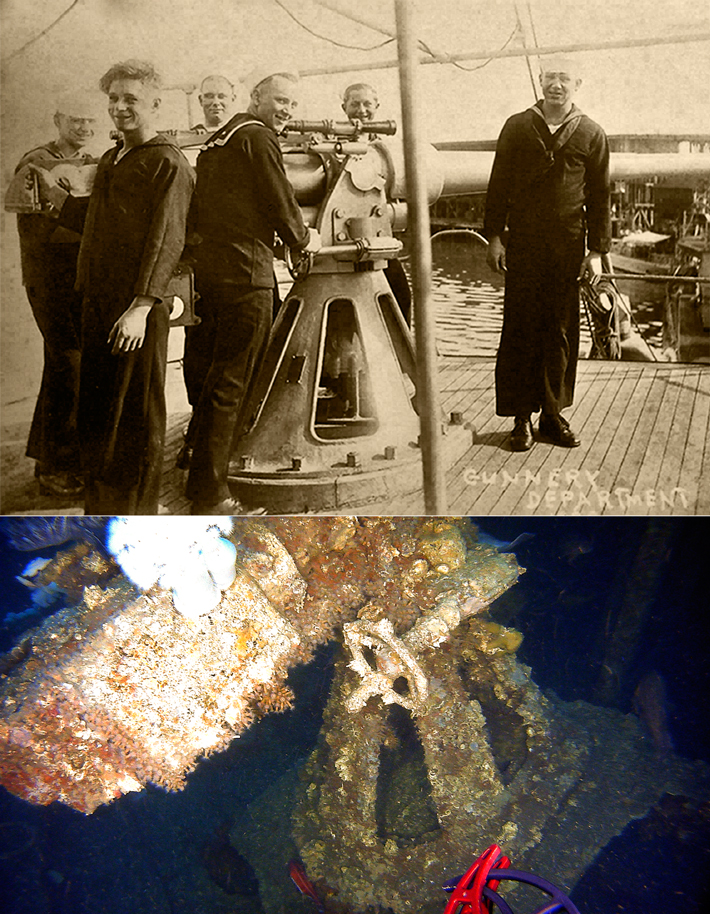 The disappearance of USS Conestoga, a seagoing U.S. Navy tugboat traveling from San Francisco Bay to American Samoa, gripped the nation in the summer of 1921. The ship and the 56 officers and sailors on board departed on March 25 but missed a planned stop in Hawaii on April 5. A thorough sea and air search found nothing, and the fate of the ship was unknown until last year, when researchers from the National Oceanic and Atmospheric Administration found a wreck in 189 feet of water near Southeast Farallon Island, just 20 miles from the Golden Gate. Video from a remotely operated vehicle has now confirmed the identity of the wreck, and based on its location and orientation, researchers concluded that the crew attempted to reach a cove on the island as shelter from rough seas.
The disappearance of USS Conestoga, a seagoing U.S. Navy tugboat traveling from San Francisco Bay to American Samoa, gripped the nation in the summer of 1921. The ship and the 56 officers and sailors on board departed on March 25 but missed a planned stop in Hawaii on April 5. A thorough sea and air search found nothing, and the fate of the ship was unknown until last year, when researchers from the National Oceanic and Atmospheric Administration found a wreck in 189 feet of water near Southeast Farallon Island, just 20 miles from the Golden Gate. Video from a remotely operated vehicle has now confirmed the identity of the wreck, and based on its location and orientation, researchers concluded that the crew attempted to reach a cove on the island as shelter from rough seas.
Fact-Checking Lawrence of Arabia
By ERIC A. POWELL
Monday, June 13, 2016
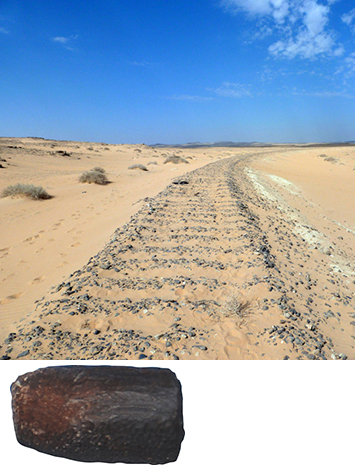 Some scholars have accused British military officer T.E. Lawrence, later known as Lawrence of Arabia, of exaggerating his experience fighting with Bedouin guerillas during the 1916–1918 Arab Revolt against the Ottoman Empire. Now archaeologists working in the Arabian Desert in Jordan can place him at the scene of one of the most dramatic moments described in his autobiography, Seven Pillars of Wisdom. In the account, Lawrence records that he led an ambush on a Turkish military train. While surveying the site of that attack, the team found a spent bullet that was fired from a Colt 1911 automatic pistol, a weapon that would have been extremely rare in the Middle East at the time—and that Lawrence is known to have carried. “You can never be 100 percent sure,” says University of Bristol archaeologist Nick Saunders, “but we are confident this bullet was fired from Lawrence’s gun.”
Some scholars have accused British military officer T.E. Lawrence, later known as Lawrence of Arabia, of exaggerating his experience fighting with Bedouin guerillas during the 1916–1918 Arab Revolt against the Ottoman Empire. Now archaeologists working in the Arabian Desert in Jordan can place him at the scene of one of the most dramatic moments described in his autobiography, Seven Pillars of Wisdom. In the account, Lawrence records that he led an ambush on a Turkish military train. While surveying the site of that attack, the team found a spent bullet that was fired from a Colt 1911 automatic pistol, a weapon that would have been extremely rare in the Middle East at the time—and that Lawrence is known to have carried. “You can never be 100 percent sure,” says University of Bristol archaeologist Nick Saunders, “but we are confident this bullet was fired from Lawrence’s gun.”
Advertisement
Advertisement
IN THIS ISSUE
From the Trenches
Is it Esmeralda?
Off the Grid
New Dates for the Oldest Cave Paintings
Fact-Checking Lawrence of Arabia
Etruscan Code Uncracked
Naval Mystery Solved
Off with Their Heads
Cursing the Competition
Proof in the Prints
Fit for a War God
A Life Story
A Villa under the Garden
Iceland’s Young Migrant
Advertisement

Recent Issues
-
 May/June 2024
May/June 2024
-
 March/April 2024
March/April 2024
-
 January/February 2024
January/February 2024
-
 November/December 2023
November/December 2023
-
 September/October 2023
September/October 2023
-
 July/August 2023
July/August 2023
-
 May/June 2023
May/June 2023
-
 March/April 2023
March/April 2023
-
 January/February 2023
January/February 2023
-
 November/December 2022
November/December 2022
-
 September/October 2022
September/October 2022
-
 July/August 2022
July/August 2022
-
 May/June 2022
May/June 2022
-
 March/April 2022
March/April 2022
-
 January/February 2022
January/February 2022
-
 November/December 2021
November/December 2021
-
 September/October 2021
September/October 2021
-
 July/August 2021
July/August 2021
-
 May/June 2021
May/June 2021
-
 March/April 2021
March/April 2021
-
 January/February 2021
January/February 2021
-
 November/December 2020
November/December 2020
-
 September/October 2020
September/October 2020
-
 July/August 2020
July/August 2020
-
 May/June 2020
May/June 2020
-
 March/April 2020
March/April 2020
-
 January/February 2020
January/February 2020
-
 November/December 2019
November/December 2019
-
 September/October 2019
September/October 2019
-
 July/August 2019
July/August 2019
-
 May/June 2019
May/June 2019
-
 March/April 2019
March/April 2019
-
 January/February 2019
January/February 2019
-
 November/December 2018
November/December 2018
-
 September/October 2018
September/October 2018
-
 July/August 2018
July/August 2018
-
 May/June 2018
May/June 2018
-
 March/April 2018
March/April 2018
-
 January/February 2018
January/February 2018
-
 November/December 2017
November/December 2017
-
 September/October 2017
September/October 2017
-
 July/August 2017
July/August 2017
-
 May/June 2017
May/June 2017
-
 March/April 2017
March/April 2017
-
 January/February 2017
January/February 2017
-
 November/December 2016
November/December 2016
-
 September/October 2016
September/October 2016
-
 July/August 2016
July/August 2016
-
 May/June 2016
May/June 2016
-
 March/April 2016
March/April 2016
-
 January/February 2016
January/February 2016
-
 November/December 2015
November/December 2015
-
 September/October 2015
September/October 2015
-
 July/August 2015
July/August 2015
-
 May/June 2015
May/June 2015
-
 March/April 2015
March/April 2015
-
 January/February 2015
January/February 2015
-
 November/December 2014
November/December 2014
-
 September/October 2014
September/October 2014
-
 July/August 2014
July/August 2014
-
 May/June 2014
May/June 2014
-
 March/April 2014
March/April 2014
-
 January/February 2014
January/February 2014
-
 November/December 2013
November/December 2013
-
 September/October 2013
September/October 2013
-
 July/August 2013
July/August 2013
-
 May/June 2013
May/June 2013
-
 March/April 2013
March/April 2013
-
 January/February 2013
January/February 2013
-
 November/December 2012
November/December 2012
-
 September/October 2012
September/October 2012
-
 July/August 2012
July/August 2012
-
 May/June 2012
May/June 2012
-
 March/April 2012
March/April 2012
-
 January/February 2012
January/February 2012
-
 November/December 2011
November/December 2011
-
 September/October 2011
September/October 2011
-
 July/August 2011
July/August 2011
-
 May/June 2011
May/June 2011
-
 March/April 2011
March/April 2011
-
 January/February 2011
January/February 2011
Advertisement






